San Miguel Castle was built by the Phoenicians and modified by the Romans, Muslims and Christians
By Nick Nutter | Updated 4 Jun 2023 | Granada | Places To Go |
Login to add to YOUR Favourites or Read Later
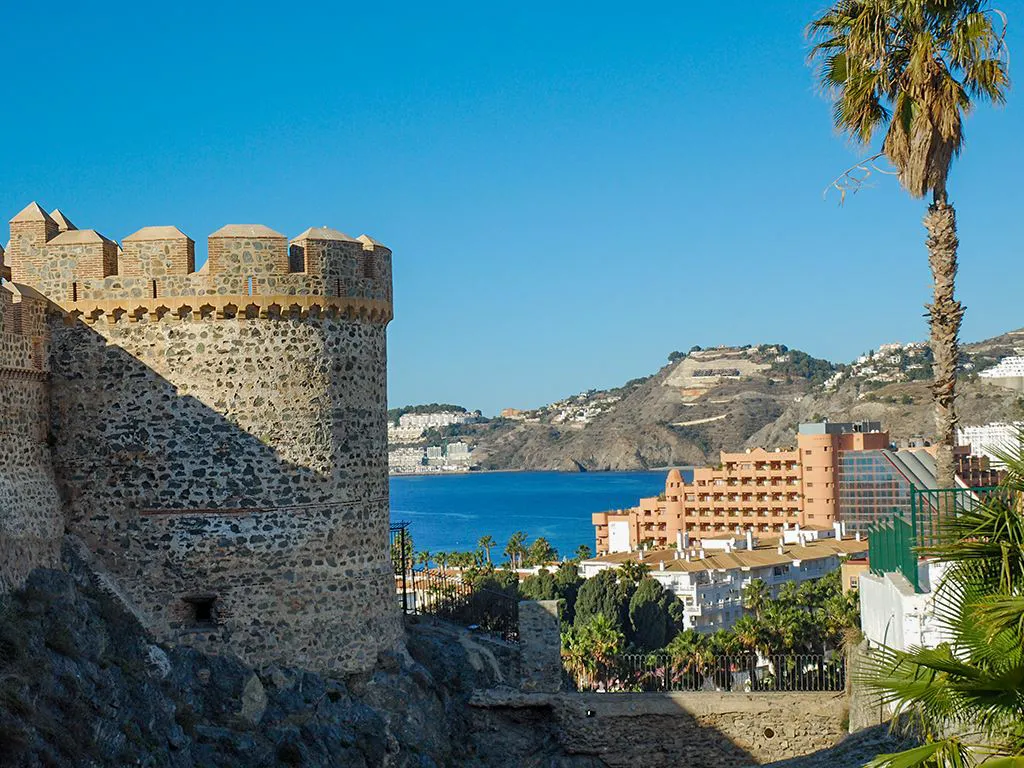
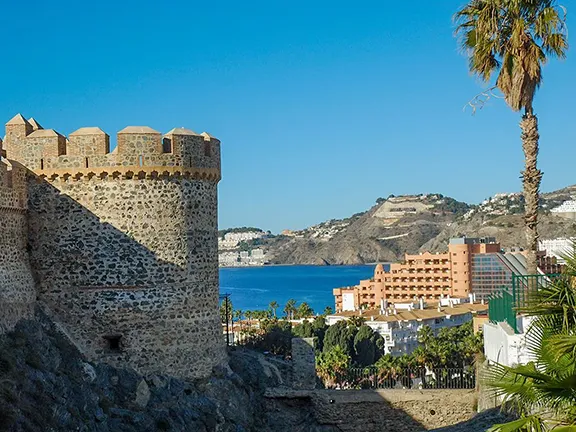
Castle of San Miguel Almunecar
In the late 20th century, excavators were surprised to find, in one of the dungeons of San Miguel Castle at Almuñecar, a skeleton still chained to the walls of the dank cell. It turned out that the skeleton was a 16th century Muslim male, a victim of the Inquisition.
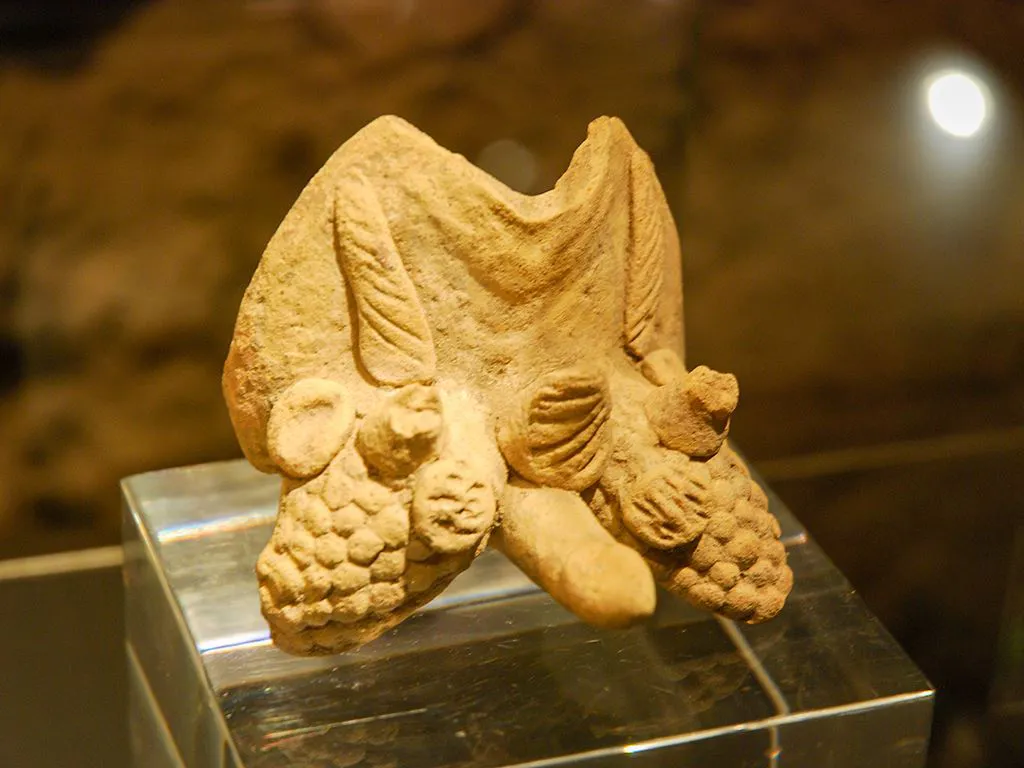
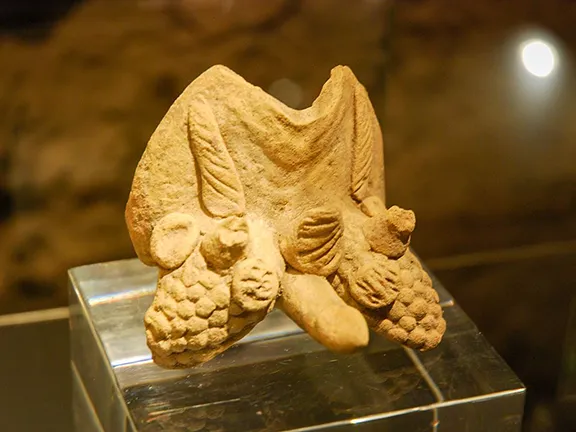
Priapo - Castle of San Miguel
San Miguel Castle has a long history. The fertile floodplain surrounding Almuñecar has been occupied since the Neolithic period. When the Phoenicians arrived in the 8th century BC, they built a fortress on top of a hill overlooking the plain and the two bays of Almuñecar that are separated by a rocky spur, the Peñones de San Christobal. The Phoenicians called their settlement Seksi, possibly referring to a group of six hills, the Greeks called it Hexi and the Romans, Sex or Sexi. The Romans modified the Phoenician castle and, after the Battle of Munda in 45 AD, changed the name to Sexi Firmum Iulium. Along came the Muslims and they also modified the castle. In fact, most of the old foundations, ramparts and towers that you see today date from the 11th century and later Nazrid innovations. The Muslims again changed the name of the town and castle to Almuñecar, a name derived from hisn al-Munakkab, meaning “fortress flanked or surrounded by mountains”.
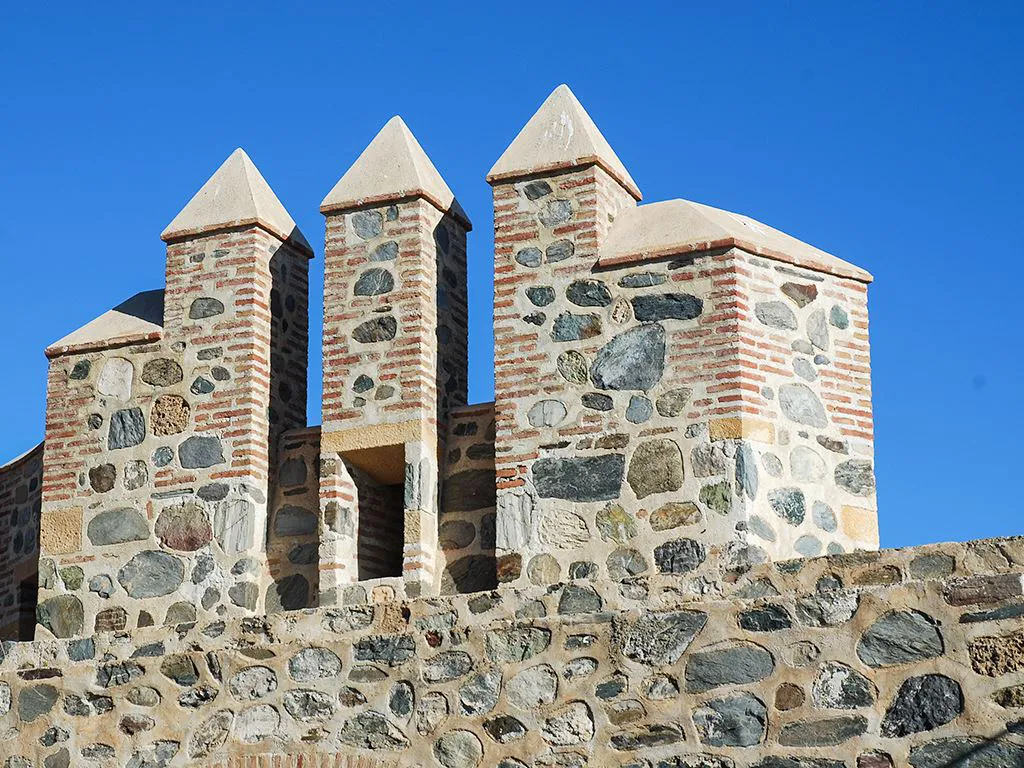
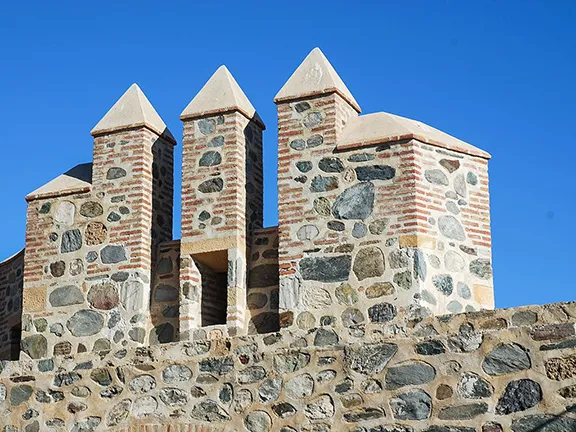
Castle of San Miguel Almunecar
The latest excavations have revealed the complete Roman perimeter with the remains of a gateway from the fortress built during the Republican period, the 3rd – 2nd centuries BC. A small necropolis dating to the later Imperial period and some water cisterns were also discovered. During the 1st century AD, Sexi Firmum Iulium as a whole underwent a programme of modernisation. It is during this period that the town benefitted from a new aqueduct, a theatre, a forum and a temple.
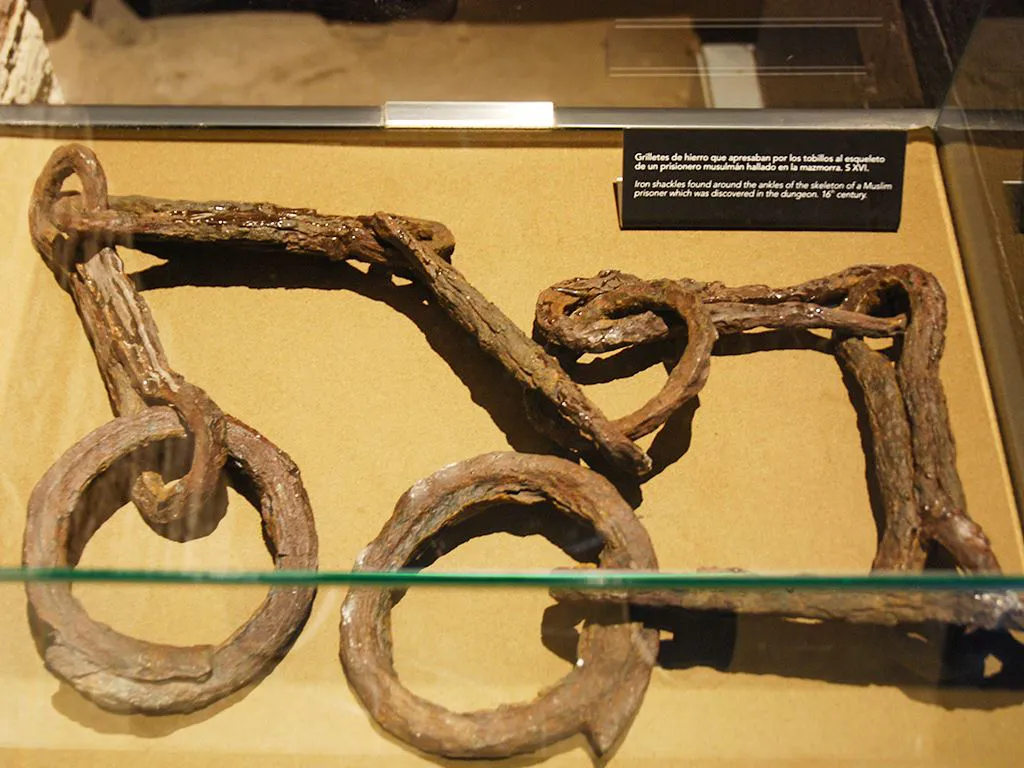
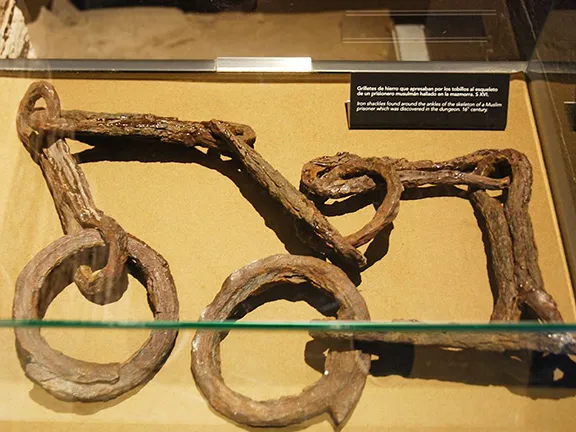
Inquisition Shackles
On the 15th August 755 AD, Abderraman I landed at al-Munakkab having fled Damascus where his family had been killed as a result of them having betrayed the Abbasid rulers. Abderraman allied himself with the leading Arabs in Iberia and acceded to the throne of al-Andalus in 756 AD. This was the beginning of the splendour of al-Andalus.
It was not until much later, the 11th century, that the Muslims constructed the castle walls, ten of the towers, including the keep, the parade ground, the prison and a coracha ( a double defensive wall). They also built a noria, a well and a water wheel to draw water into the castle, and a public baths or hamman.
During the Nasrid Dynasty in Granada, the castle was used by the rulers as a holiday resort.
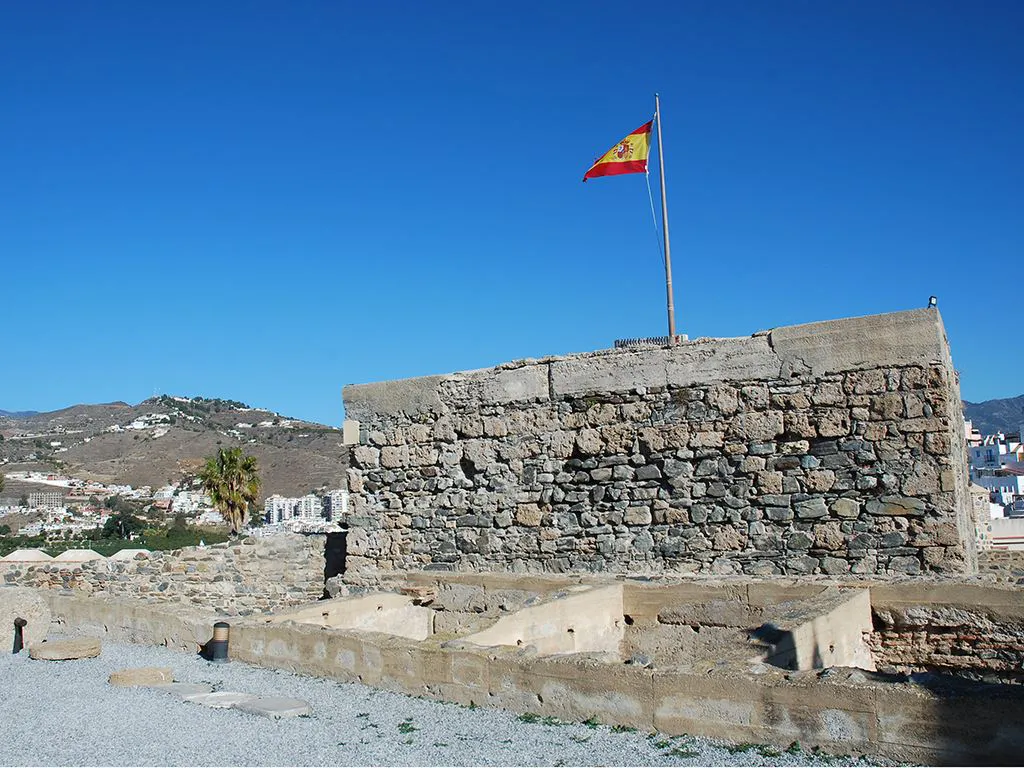
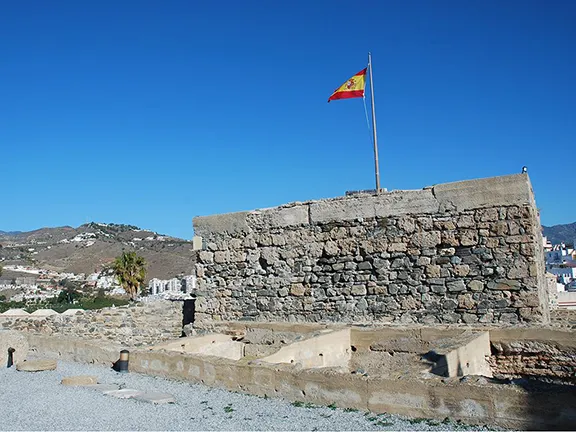
Castle of San Miguel Almunecar
The Castle of San Miguel was taken by the Christian Monarchs in 1489. The increased use of artillery persuaded their successors to rebuild part of the castle during the 16th and 17th centuries. A deep moat and drawbridge, protected by an artillery battery with four cylindrical towers, guarded the gateway into the castle from the land side. On the seaward or south side, a defensive battery was constructed and the Muslim built coracha was reinforced with a pentagonal tower with gun ports.
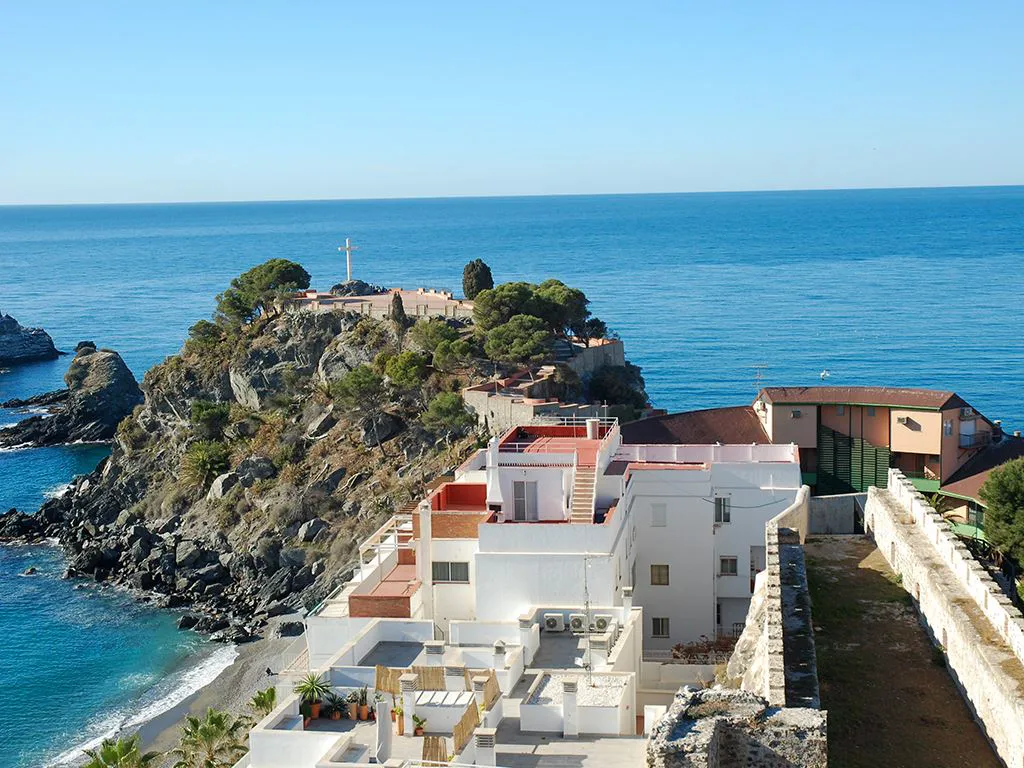
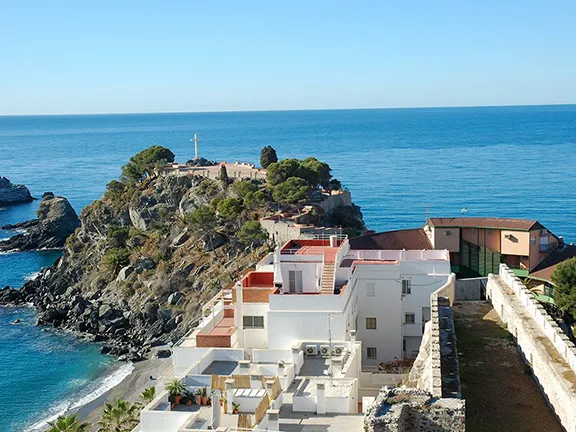
Peñones de San Christobal
The Castle of San Miguel continued in use until the early 19th century during the War of Independence (the Peninsular War) against the French following a heavy bombardment by the British navy that did considerable damage. On May 27th 1812, the British warship HMS Hyacinth, acting in collaboration with Spanish partisans from Nerja, began to bombard the castle that was occupied by French troops. The French garrison fled and HMS Hyacinth then attempted to render the castle unusable but failed because their gunpowder had become soggy.
The castle, though, had seen its last days as a military stronghold and following a cholera outbreak in 1830 it became the town cemetery, a role it continued to fulfill until 1977 when the bodies were interred and moved and a process of renovation began.
The Castle of San Miguel was declared a National Monument in 1931 and a Site of Cultural Interest in 1985.
The reparations carried out since 1977 have been tasteful. Some of the walls, towers and ramparts have been rebuilt, whilst other parts have been left as is. For instance, as you cross the (new) drawbridge to enter the castle, the left-hand tower that guarded the entrance is partially collapsed, damage incurred during the British bombardment.
The line of the double, fortified wall that connected the castle to the Peñones de San Christobal can be seen from the battlements. This was partially demolished during the bombardment and then, in modern times, cleared to make way for the paseo.
There are plenty of plaques with information about the various structures and the history of the castle. There is also a small, informative, museum and a modern Centre of Interpretacion. In the latter, note the scale models of the castle and town during the Phoenician, Roman and Muslim periods.
The castle museum has an interesting collection of artifacts including the shackles worn by the unfortunate victim of the Inquisition and a rare 1st century AD statue of Priapo. Priapo, the son of Bacchus and Venus, was the god of gardens and male reproduction, hence the phallus.
For opening times and price of admittance to San Miguel Castle, click here